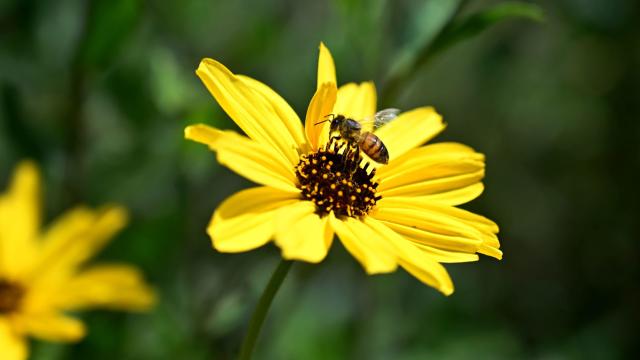All of our crops have naturally-occurring predecessors that are found in the wild. But that may not be the case for long. A new study found that those OG edible plants are doing badly.
The findings, published in the Proceedings of the National Academy of Sciences on Monday, show that 96% of wild relatives of agricultural crops in the U.S. could be facing an urgent or high need for conservation. The research suggests that based on vulnerability standards from the International Union for Conservation of Nature, just over 7% of them are critically endangered in their natural habitats, 50% are endangered, and 28% are vulnerable.
This could be bad news for culture, since these plants teach us about our anthropological histories, and many of them are still directly harvested from the wild for food or medicine by Indigenous populations. It’s also a threat to food security. When plants are cultivated as crops, they lose the characteristics which allow them to thrive in their natural environments. Wild maize, for instance, is much heartier than the mass-produced corn that fills the country’s industrial farms, and wild rice can thrive even when it’s covered in pests.
[referenced id=”1658208″ url=”https://gizmodo.com.au/2020/12/scientists-just-dropped-a-bunch-of-new-animals/” thumb=”https://gizmodo.com.au/wp-content/uploads/2020/12/14/u58mj3gij84mikyjkngb-300×168.jpg” title=”Scientists Just Dropped a Bunch of New Animals” excerpt=”There are some 8.7 million known species on Earth. But it’s always exciting to know when scientists find some mysterious creature they didn’t know existed or rediscover one not seen in ages. When it comes to biodiversity, more is a good thing. And I know this is silly, but honestly,…”]
For the new study, which took a decade to compile, the authors created a national inventory of native wild relatives of crops in the U.S. that are currently being mass produced. They found that there are thousands of these kinds of species, if you include not only the relatives of edible crops, but also the predecessors to crops used for other purposes, like textiles and fibres, spices, medicines.
“Our inventory was almost 5,000 species which is about 35% of the total flora for the country!” Colin Khoury, a crop diversity specialist at the Alliance of Biodiversity and International Centre for Tropical Agriculture who led the study, wrote in an email.
The researchers whittled down the list to focus exclusively on the wild relatives of edible plants, including cereals, fruits, nuts, pulses, roots, tubers, and vegetables that are grown all around the world. They also included some iconic U.S. species, like sugar maple and wild rice, bringing the number of plants to 594.
From there, the researchers gathered all sorts of information about where each species lives, scanning hundreds of thousands of records from herbariums, seed banks, and other biodiversity records. Armed with this data, they were able to use species distribution modelling to estimate the overall distribution of each plant in their natural habitats across the U.S. They then conducted conservation analyses for the species, examining the occurrence of each one and determining how widespread they are in their natural homes.
The average conservation score among all of them was 24.9 out of 100. Some of the most threatened varietals were the Pecos sunflower, which is only found in the Southwest desert, and Texas wild rice, which is only found along one stretch of a river in Texas.
Crop wild relatives are facing the same threats that wild plants everywhere are facing: habitat destruction, changes in climate, the growth of invasive species, pollution, overharvesting, and industry — including, ironically, industrial agriculture.
“Traditional agricultural systems, more formed by human labour than heavy machinery and hand work than chemicals, can make more space for these wild relatives, which often occur around farmlands and even within fields,” Khoury said. “Industrial ag has removed a lot of these habitats for crop wild relatives.”
While some commercial crops have gained desired commercial traits like taste and size, “they have lost many survival traits. Their wild cousins still have these.” Amid the ever-worsening climate crisis, which is creating new challenges with extreme weather and pests, resilient edible plants will be all the more important. Many of the wild varietals could also be cultivated as food sources themselves. Khoury said potato bean, a native plant, is like a potato but has more protein, which could make it an ideal cultivar.
The situation is dire, but there’s plenty we can do to remedy it. The U.S. has a gene bank system which is meant to safeguard the genetic diversity of agriculturally important plants, and is also home to hundreds of botanical gardens and tons of wide open space. If policymakers would just put some effort into it, we could conserve these important species.
“What is needed is awareness, momentum, and resources, to take the steps to ensure that these amazing little plants are conserved, are available to all, and are widely known about, said Khoury.
Ultimately, world leaders should also be working to transform the global economy to prioritise ecosystem health, as United Nations scientists have suggested. That would include making food and energy production more land- and water-efficient, limiting waste, and preserving biodiverse lands. And of course, we need to draw down our carbon emissions and stop using fossil fuels to curb global warming, otherwise we’ll usher in even more threats.
